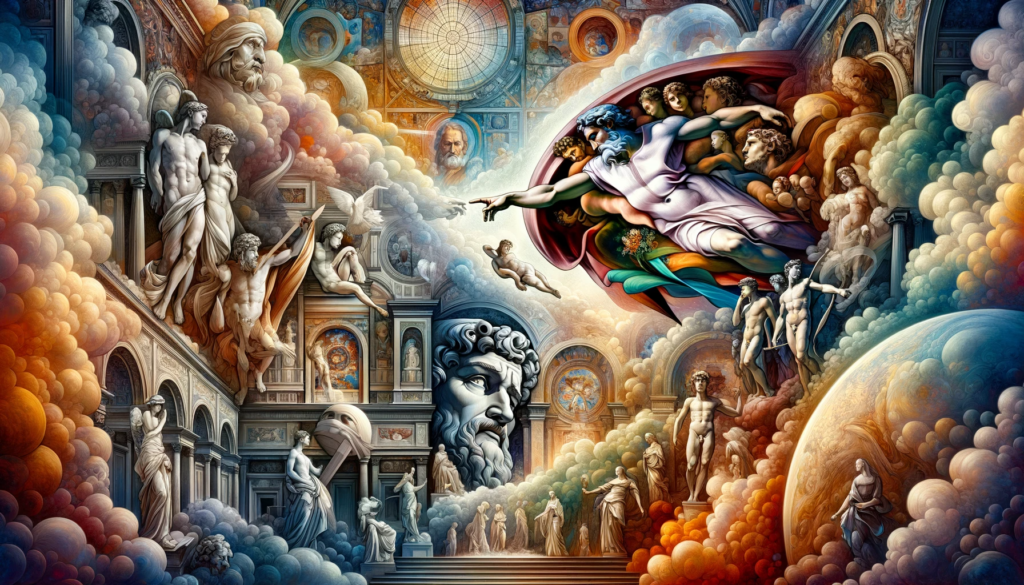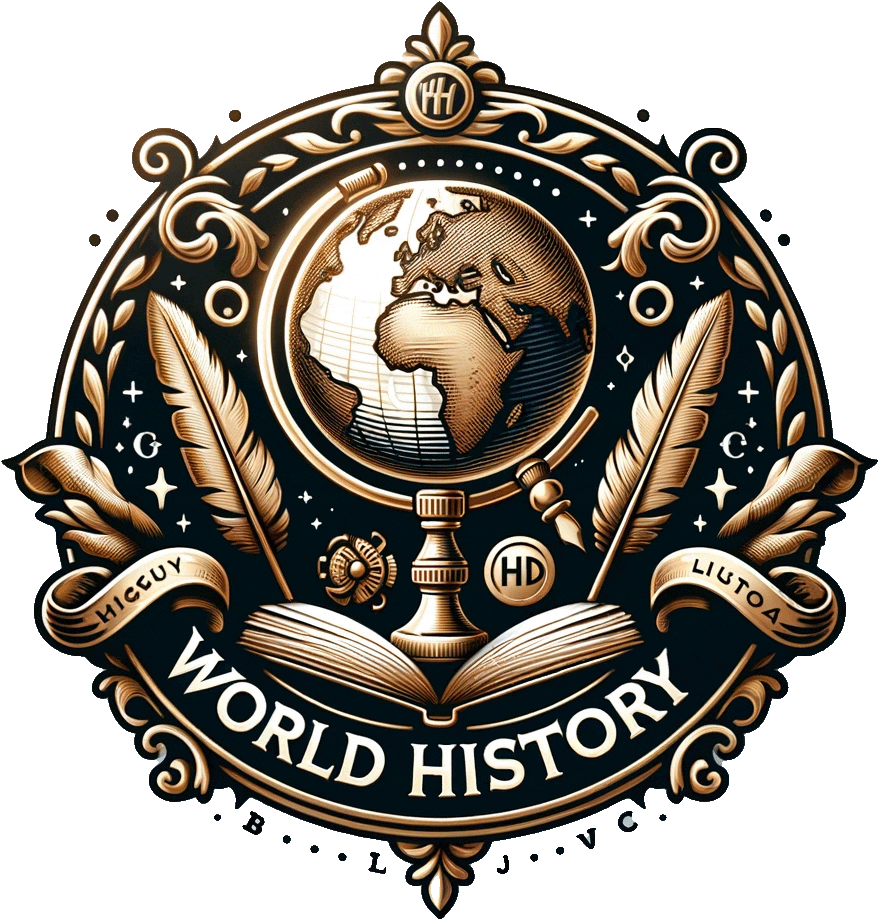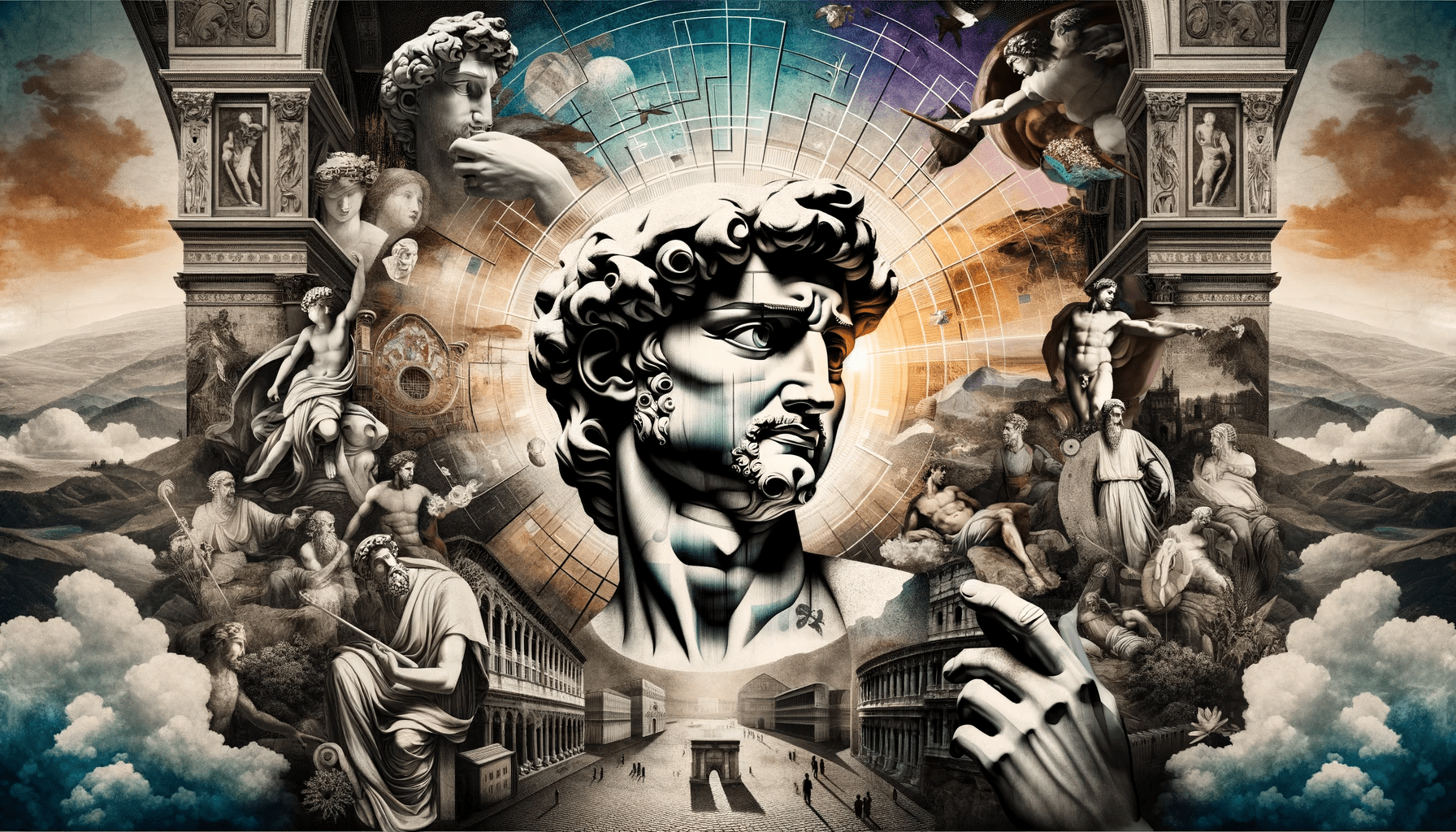Michelangelo Buonarroti, a name synonymous with the Renaissance, remains one of the most admired and studied artists in history. His work, both powerful and delicate, forever changed the course of Western art. In this blog, we dive into the life and legacy of this master, whose work continues to be influential and inspiring.
The Early Years of Michelangelo
Michelangelo was born in 1475 in Caprese, Italy. His talent for sculpting was recognized early on, and at a young age he became an apprentice to the famous painter Domenico Ghirlandaio. However, his true passion lay in sculpting, and soon he had the opportunity to delve into this.
The Influence of His Teachings
Michelangelo’s early works, such as the “Battle of the Centaurs” and “Madonna of the Steps,” demonstrate his deep understanding of human anatomy and movement. He would further develop and perfect these skills in his later works.
Michelangelo’s Masterpieces
Michelangelo’s contribution to the visual arts is unparalleled. His most famous works include the frescoes in the Sistine Chapel, the statue of David, and the Pietà.
The Sistine Chapel
Perhaps his most famous work, the ceiling paintings of the Sistine Chapel in Vatican City, were painted between 1508 and 1512. These paintings, including “The Creation of Adam,” are famous for their emotional intensity and anatomical precision.
David and Pietà
The statue of David, completed in 1504, is considered a paragon of Renaissance sculpture. The Pietà, a sculpture of Mary with the dead Jesus, demonstrates Michelangelo’s ability to bring marble to life with incredible detail and emotion.
Michelangelo’s Influence and Inheritance
Michelangelo was not only an artist, but also an architect, poet and engineer. His versatility and innovative approach to art have changed the way we look at sculpture and painting.
The Influence on Later Artists
His work and style influenced numerous artists, including Raphael and Bernini. Michelangelo’s emphasis on realism and expression can still be seen today in modern art and design.
The Eternal Inspiration
Michelangelo’s legacy lives on, not only in his works of art preserved in museums and churches around the world, but also in the timeless principles he established in the art world.
Conclusion
Michelangelo Buonarroti, one of the greatest masters of the Renaissance, remains a central figure in the world of fine art. His innovative approach and technical skills have forever raised the standards of art.
The Timeless Impact of Michelangelo
Michelangelo’s legacy is not limited to his era; it spans centuries and remains relevant in the contemporary art world. His works are studied for their technical brilliance and emotional depth, which continue to inspire artists and enthusiasts around the world.
Lessons from His Life and Work
His life and work demonstrate the power of perseverance, the value of multidisciplinary studies and the importance of pursuing passion. Michelangelo was not just an artist, but a true Renaissance personality, whose life’s work teaches us about the power of human creativity and expression.
An Inspiration for Future Generations
A symbol of artistic excellence, Michelangelo remains an inspiration to artists and non-artists alike. His works, which demonstrate both technical skill and deep emotional resonance, will continue to captivate and inspire many generations to come.



Leave a Reply